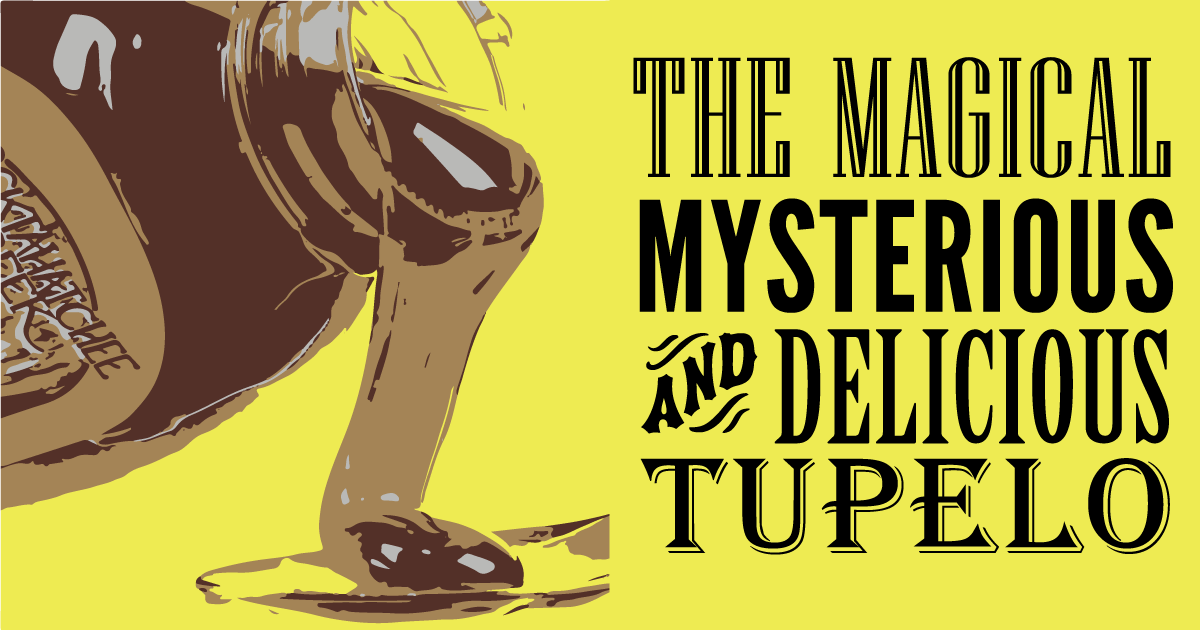No products in the cart.
Raw Honey
Sweet as Tupelo Honey …
In the Florida panhandle, where the Appalachicola and Chipola rivers meet, along the tidal marshes, seagrass meadows, and diverse forests, you’ll find the delicate Tupelo tree. You might also find some friendly neighborhood beekeepers coming from our farm in the area to check on hives – because this is where we harvest the unique Tupelo Honey that’s available in our store.
It’s hard, hot work, and some years are better than other years, but it’s always worth it when we spin out Tupelo honey from the hives and package it up. This honey is regarded as one of the best and most sought-after in the world, and for good reason.
The Magical Tupelo
What’s so great about tupelo honey? Well, let’s start with the unique harvesting conditions it requires.
Tupelo blossoms are extremely delicate – with small pistils secreting nectar that bees love. A strong wind or a hard rain (definitely not uncommon in the panhandle) can rip the blossoms right off the trees in the middle of a harvest. Since the harvest period only lasts for about 3 or 4 weeks beginning in late April, and it’s hard enough to get the hives in and out of the area, collecting tupelo can be a bit of a gamble – but it is totally worth it for the end result.
Our beekeepers work hard to make sure they harvest as pure a tupelo crop as possible.
That work begins long before the harvest, as we prep the bees in the winter with pollen patties and supplemental feed to stimulate the queens and begin raising more young bees to enlarge the colonies.
These hives are specially bred from our own queen stock to ensure they have desirable characteristics like a prolific thirst for nectar, gentleness, and disease resistance.
When the tupelo bloom is about to begin, we want the honey collected to be as close to pure tupelo as possible. This requires that the beekeepers make sure to put clean, empty combs on hives as soon as the first tupelo flowers begin to bloom.
This ensures that the crop will be as pure tupelo as possible, with a minimal inclusion of other varieties.
Tupelo Honey Properties
The most famous property of tupelo honey is its resistance to crystallization. The ratio of fructose to glucose in the honey prevents the crystallization that is common in most forms of raw honey. Some beekeepers have reported batches of tupelo over 50 years old that have yet to crystallize.
Tupelo honey also has a unique taste. We’d love to describe that taste in more detail here, but the technology to give you a sample through the screen just isn’t in existence, yet. Tupelo has a buttery, smooth, light taste – some even describe it as almost “menthol”.
In terms of appearance, tupelo is also unique. It is a light, golden amber color with a greenish tint when held up to the light. A pure tupelo honey will not granulate.
If you’re looking for a sample, our tupelo honey is available to taste at the St. Ambrose Cellars tasting room next door to our farm in Beulah, MI (click here for more on St. Ambrose Cellars). We also have small bottles of tupelo available for sale in our store.
About Tupelo & Diabetes
It’s been said that diabetics are “allowed” to eat tupelo honey, specifically. The truth is that we aren’t doctors, and wouldn’t want to make claims like that without the proper backing.
We’re addressing it because it’s a question we receive pretty regularly from customers – and we must stress that you should always check with your physician rather than what a webpage says.
She’s as sweet as Tupelo honey …
We can’t say enough about how delicious this honey is. The crop in our store currently is a lab-certified tupelo, so you can be sure that you’re getting an authentic experience when you purchase. Try it today and leave us a review!

